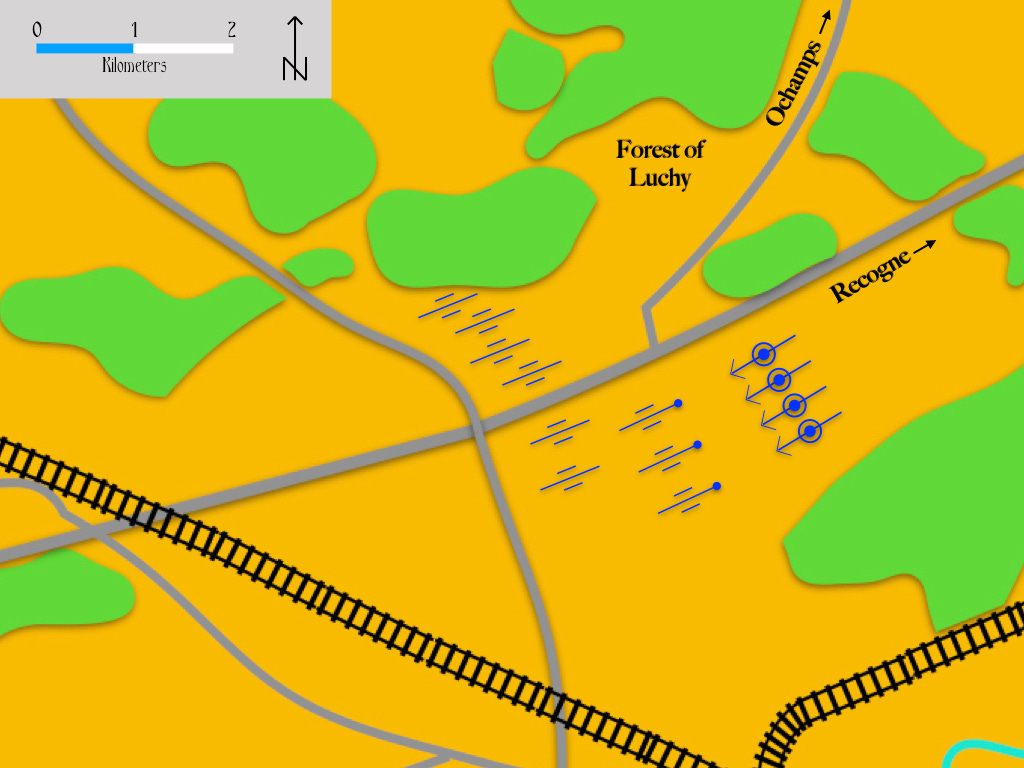The Forest of Luchy
The German Army of World War I
At noon, on the 22nd of August of 1914, in the heavily wooded Forest of Luchy, just north of the town of Bertrix in the Ardennes region of Belgium, the main body of the German 21. Infanterie Division collided with that of the French 33e Division d’Infanterie .
Like other active infantry divisions in the service of the German Empire, the 21. Infanterie Division possessed a full brigade of field artillery. The senior regiment of this brigade, the 27. Feldartillerie Regiment, fielded two battalions, each of eighteen 77mm light field guns. The junior regiment, the 63. Feldartillerie Regiment, consisted of one battalion (I/FAR 63) of light field guns and one (II/FAR 63) of 105mm light field howitzers.
On this particular day, one of the field gun battalions of the 27. Feldartillerie Regiment (I/FAR 27) was absent from the main body of its parent division. Attached to an infantry regiment, it provided the artillery element of detachment doing duty as a flank guard. At the same time, the attachment of a battalion of sixteen heavy field howitzers, the First Battalion of the Third Foot Artillery Regiment (I/3. Fußartillerie), more than compensated for the missing field guns.
These four battalions began the battle on the road that ran southwest from Recogne. The three field artillery battalions were in front. The foot artillery battalion was in the rear. The three infantry regiments of the main body (each of which took up less space on the road than an artillery battalion) were interspersed between the artillery units.
As soon as contact was made, the division commander ordered the artillery to move forward and set up in the open. This was not an easy task, for the woods north of the clearing and the whole area west of the road to Ochamps were filled with French infantry and field guns.
The three field gun batteries at the head of the German column (those of I/FAR 27) cleared the way for the forces that followed. Firing over open sights at ranges of less than 1,000 meters, they began the job of clearing out the Frenchmen that hid in the tall weeds that filled the clearing.
While rifle bullets and shrapnel balls filled the air, the two remaining German field artillery battalions galloped from the shelter of the woods and took up firing positions. These were soon followed by the somewhat less graceful, but far more powerful, heavy field howitzers of the attached Fußartillerie battalion.
Before this grand battery had grown to its full strength, the French forces that had threatened to bottle up the Germans on the forest road to Recogne began to pull back. Soon thereafter, the massed guns and howitzers of the 21. Infanterie Division concentrated their fire upon a French field artillery regiment moving along a ridge some three kilometers away. In a matter of minutes, the fire of the German field pieces, light and heavy, did so much damage to this regiment that it left twenty-eight of its thirty-six guns on the battlefield.
Source: For more on this engagement, and the larger battle of which it was a part, see Bruce Gudmundsson, On Artillery (New York: Praeger, 1992) or Bruce Gudmundsson, ‘Unexpected Encounter at Bertrix’ in Robert Cowley, The Great War (New York: Random House, 2002.)
For Further Reading:
To Share, Subscribe, or Support:





